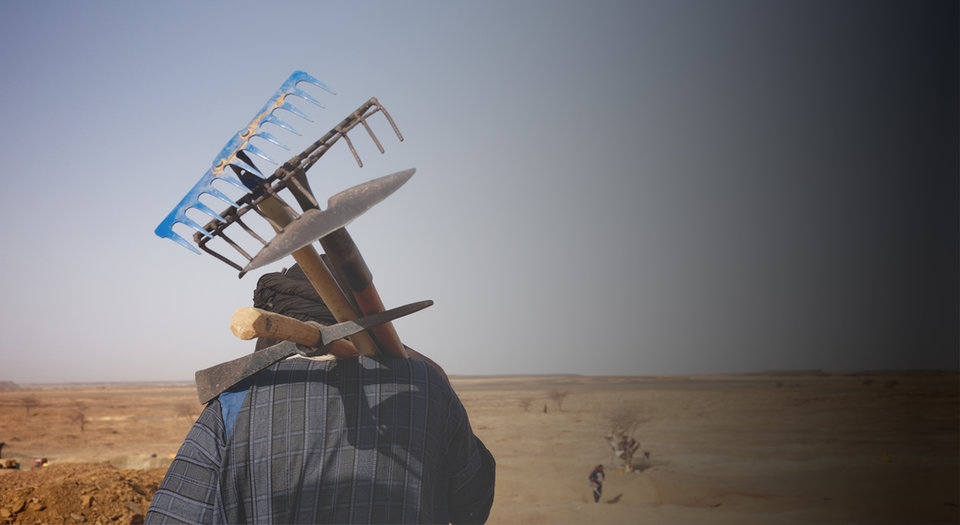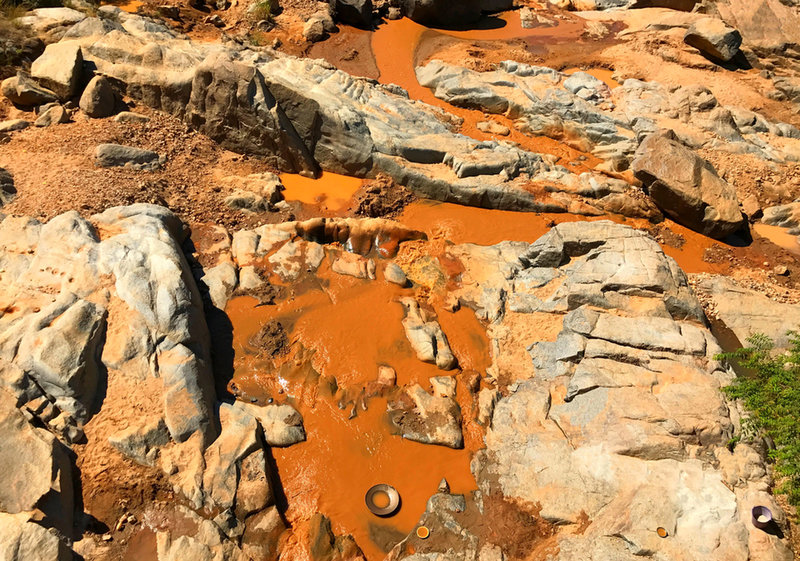
COVID-19 | ARTISANAL MINING
How Covid-19 has affected artisanal mining
Covid-19 has affected everyone and artisanal and small-scale miners are no exception. In Sub-Saharan Africa, the sector has been affected by lockdowns, unstable commodity prices and limited healthcare supplies, yet, despite these problems, communities have proved highly resilient and as resourceful as ever. Heidi Vella finds out more about the immediate and lasting impacts.
As Covid-19 spread across the globe at the beginning of the year, borders and entire countries partially or totally shut down, sending spot prices for commodities crashing. For artisanal and small-scale miners (ASM) in Sub-Saharan Africa this meant demand for minerals, and in some cases the means to access their production, diminished over an extremely short space of time, as did their access to finance and supply chains.
In most cases this resulted in a complete loss of income for large swathes of communities that have little access to government support. In turn, pre-existing challenges were exacerbated, with both food insecurity and risks for child labour increasing, though on-the-ground issues have varied widely depending on location and type of operation.
“This obviously had a really serious impact on these communities’ ability to derive a living from mining activity,” says Adam Rolfe, senior manager, good governance, at Levin Sources. “These are marginal communities, so significant shifts in income can affect directly the level of calories they consume, a problem further compounded by breakdowns of localised agricultural value chains that in some areas resulted in higher prices for food staples.”
Levin Sources, a consultancy and social venture, conducted small-scale surveys of artisanal miners in Zimbabwe, Mozambique, Uganda, Ethiopia, and the Democratic Republic of Congo in June and July with funding from the World Bank and Gemcorp.
Immediate Impacts
Research by the Artisanal Gold Council has found that, in some instances, stock prices for gold had dropped 40%-50% pre-Covid value, within a matter of weeks. Even as prices and demand for gold as a financial product increased internationally due to economic uncertainty, a lack of liquidity and a break down in pre-existing formal financial relationships continued to stall the sector. This most likely resulted in increased contraband flows, says Rolfe.
In northern Tanzania, independent research institute IPIS conducted interviews with 37 key informants representing gold, coloured gemstone, diamond, limestone, and salt mining on a rolling basis throughout the pandemic. It found that because there was no national lockdown, artisanal mineral production continued, though at a reduced pace and price.
Miners received very, very, low prices for their minerals.
“Though most continued to work, there were no international buyers or markets anymore, which meant that miners received very, very, low prices for their minerals. This posed very significant challenges for their communities, which depend heavily on this income,” explains Mieke Thierens, a researcher at IPIS and co-author of the report ‘The impact of Covid-19 on artisanal mining communities in northern Tanzania’.
The report notes that in May 2020, the average price paid for a gram of gold was around 22% less than before the outbreak of Covid-19. Diamond and tanzanite prices seemed affected worse, with reported reductions of 60%–70%.
Similarly, in Shakiso, Ethiopia, an area famed for green gemstones, the crash in global demand for gemstones, as well as strict international travel restrictions, saw the country’s mineral exports plummet, according to Levin Sources’ research.
Myriad challenges
Different regions faced different challenges. In Mozambique, government-imposed Covid-19 response measures, such as social distancing, were the main reported cause for decreases in activity. Many mine sites were forced to halve their workforce and some had to shut down completely, with a disproportionate job loss for migrant workers. By the end of Levin Sources’ research, nearly 100% of miners reported decreased income.
However, unlike in many other regions, the study found that gold prices at ASM sites in Mozambique remained relatively stable throughout the first months of the pandemic. Miners said they were still selling their gold to the same buyers as before and were not experiencing increased difficulties doing so.
It’s thought that this is because the country did not impose restrictions on domestic movement. This allowed the existing system – buyers often playing a dual role as financiers, including in the provision of equipment and supplies such as mercury and food – to continue with limited interruptions.
In Uganda, however, activity decreased significantly due to lockdown measures, resulting in sudden unemployment that, according to the Levin research, seems to have affected women more than men. The disparity is due to a lack of alternative opportunities for women in the region. As mining resumed, an increased presence of children on mine sites, which is prohibited, was reported, as schools were still closed but mines were open.
ASM often plays a pivotal role as a safety net-economy to stop people falling further.
Rolfe says it is yet to be seen whether the reported increase in child labour is a temporal impact or whether it's a lasting feature of an economy that's been struck and is still healing.
“ASM often plays a pivotal role as a safety net-economy to stop people falling further,” says Rolfe.
He adds that if there is more child labour this would pose challenges to responsible sourcing efforts, even though these efforts tend to only account for a small proportion of overall ASM production and trade.
“Child labour is still a problem at artisanal mining sites and responsible industry should explore ways of engaging with the issue and supporting a route out of mining for children.”

// 3D System Model and Completed Installation. Credit: Deimos
Resilience against the pandemic
Speaking of artisanal miners in Tanzania, Thierens says the communities there have proven more resilient than was originally assumed.
“These are very creative communities with complex arrangements for finances and networks and so on. So although it has been very hard on them, the moment international trade became possible again, these communities caught up, they got better prices for the minerals, and a lot of their suffering and troubles have been, to a point, mitigated in that way,” she says.
Coronavirus awareness and health impacts have also proved better than anticipated.
The moment international trade became possible again, these communities caught up.
In many cases, governments have tried to raise awareness of the virus, if not much else, and been largely successful. Stories have emerged of communities using their limited resources to support themselves. In Zimbabwe, respondents to a Levin Sources survey reported having collectively funded a Covid-19 ward for miners at a local hospital.
Overall, health-wise, Sub-Saharan Africa appears to have mostly escaped the worst-case scenario expected. Surveys show that coronavirus transmission and health impacts have been minimal.
“The African continent, as far as we know, has been spared from the worst things that were predicted for general health and safety, but of course more awareness would be a good idea,” says Thierens.
// Main image: Chami, Mauritania - July 13, 2018: artisanal miner transporting rakes and shovels on gold pits. Credit: Senderistas / Shutterstock.com
The situation now
Lack of liquidity and demand for gold, specifically, is thought to be no longer an issue facing artisanal miners due to a recovery of the stock price globally, according to both Thierens and Rolfe. It’s only a continuing problem where local lockdowns are still in place or have been re-imposed.
In some countries, such as in the Democratic Republic of Congo, where Levin Sources has an ongoing programme, spot prices are now even higher than in London. However, Rolfe warns that this can be associated with issues such as money laundering, with ‘gold being used as a currency as opposed to as a mineral’.
While prices are booming for gold, the diamond sector continues on a downward trend.
If there is co-location of minerals, there might be limited impacts.
“For diamonds and other high value gemstones that require significant pre-financing, I think it will really depend on the consumer market. If there is co-location of minerals, there might be limited impacts as miners transition to different forms of mining,” says Rolfe.
“But the needs of a population will not suddenly be met overnight by that and we could see significant demographic shifts across borders, or within borders,” he adds.
In Tanzania, however, Thierens says that it now appears to be ‘business as usual’.
// Main image: Chami, Mauritania - July 13, 2018: artisanal miner transporting rakes and shovels on gold pits. Credit: Senderistas / Shutterstock.com
Formalisation
Well established and by now well-known challenges still persist across the artisanal mining sector - including poor working conditions, child labour, and extreme poverty - and to some extent have been exacerbated by the pandemic.
Formalisation efforts must continue but they need also to be incentivised. Rolfe says that formalisation during the pandemic in Sub-Saharan Africa did not always prove advantageous to miners, with licenced miners often unable to work but without access to government support, while in many cases informal mining continued.
“This has resulted in some turning to informal activities once again. And that's the trap,” he explains. “There is tension between the formal sector and the path to formalisation, which perhaps doesn't provide as many safeguards or certainties to populations and is not always in-line with the cost to them, which is ongoing taxation and higher levels of reporting burden.”
We need to find a way of bridging the gap between reality and practice.
Despite increased international attention in recent years, there’s still so much work to do to improve conditions and end human rights abuses in artisanal mining. At present, responsible sourcing from the sector represents only a fraction of what is produced.
“We need to find a way of bridging the gap between reality and practice; I hope the upcoming European conflict minerals regulations can be a driver for that but I'm not sure it's enough,” says Rolfe. “I'd like to see strong policy debate within the OECD about how, after 10 years of discussion on responsible sourcing, three iterations of the due diligence guidance on responsible mineral supply chains from high risk areas, we can now scale the learnings we have acquired.”
// Main image: Artisanal miner transporting rakes and shovels on gold pits.
Credit: Senderistas / Shutterstock.com